What Is Ghee?
Ghee is similar to clarified butter, which is produced by heating butter to remove the milk solids and water. However, in comparing ghee vs. clarified butter, ghee is simmered longer to bring out the butter’s inherent nutty flavor and is left with a higher smoke point than butter, meaning that it can be heated to a higher temperature before it starts to smoke.
Not only that, but ghee is rich in beneficial nutrients and contains several fatty acids that are important to health. Plus, there are numerous benefits of ghee, and some of its components have been shown to do everything from boost weight loss to improve digestion and relieve inflammation.
There are 4 common methods through which ghee is prepared:-
Milk butter
Sour raw milk is churned into butter. The butter is boiled in an open pan to allow the water to evaporate. The hot ghee is transferred and stored.
Direct cream
Fresh cream, cultured or washed cream is directly converted to ghee. This method requires a long heating time and produces a caramelized flavor.
Cream butter
Milk is separated into cream which is then churned into butter. The butter undergoes heat clarification to produce ghee.
Pre-stratification
Suitable for large quantities of butter. Butter is melted at 80-85 °C for 30 minutes. Layers of protein particles, fat and buttermilk are induced. The buttermilk is drained out. The remaining layers of fat are heated to a temperature of 110 °C to remove moisture and develop flavor.
Here is a simple method to prepare ghee with store brought cream butter :
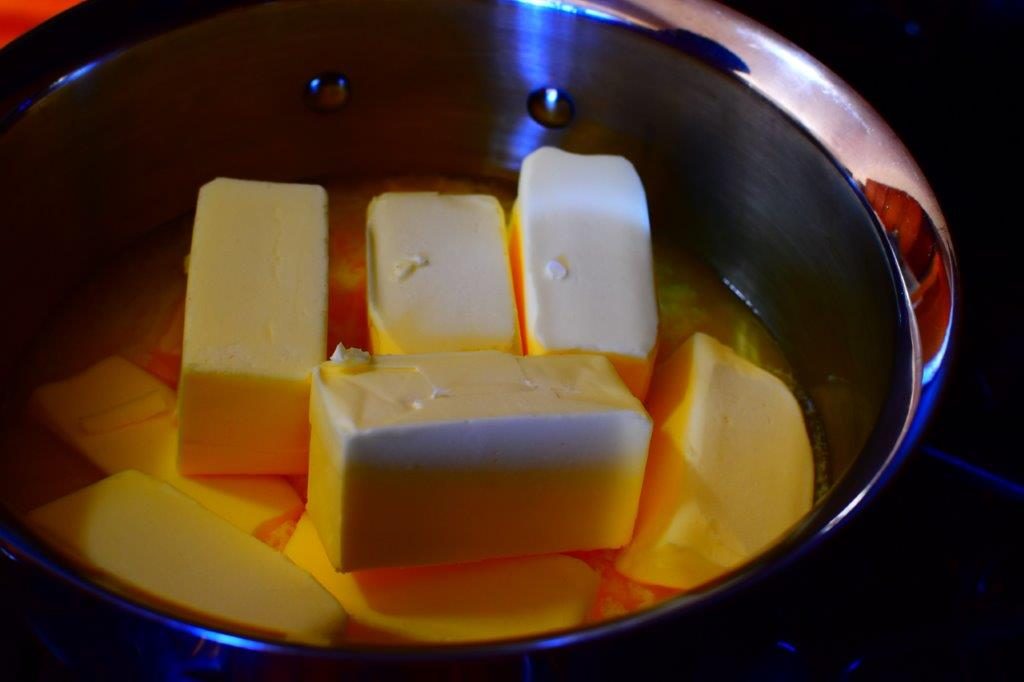

Easiest method to prepare Ghee from Unsalted Butter
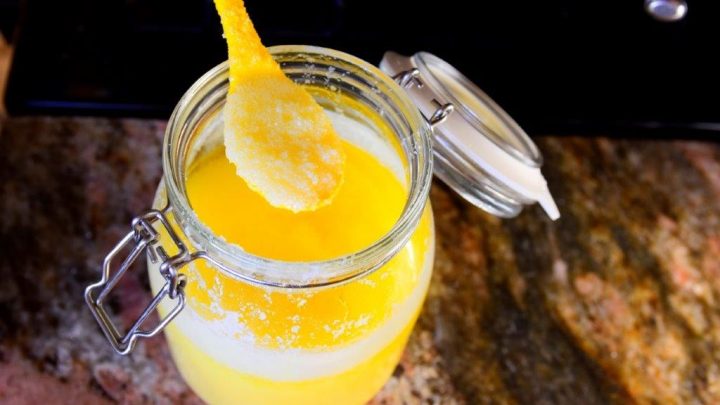
Ingredients
- 2 lb / 1 kg Unsalted Butter
Instructions
Melt Unsalted Butter in a heavy bottom pan on medium-high heat.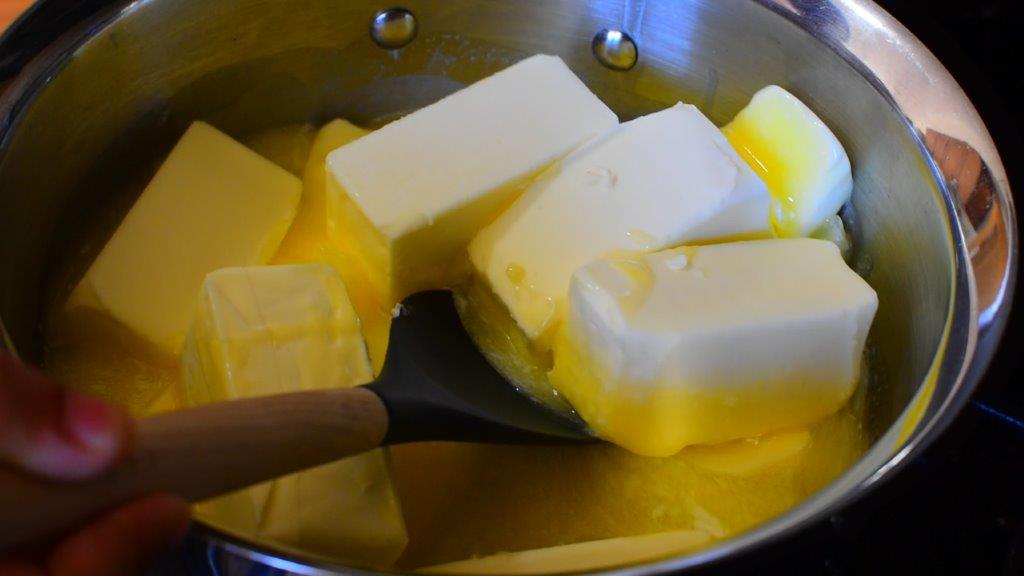
Once melted reduce the heat to medium and bring to a boil.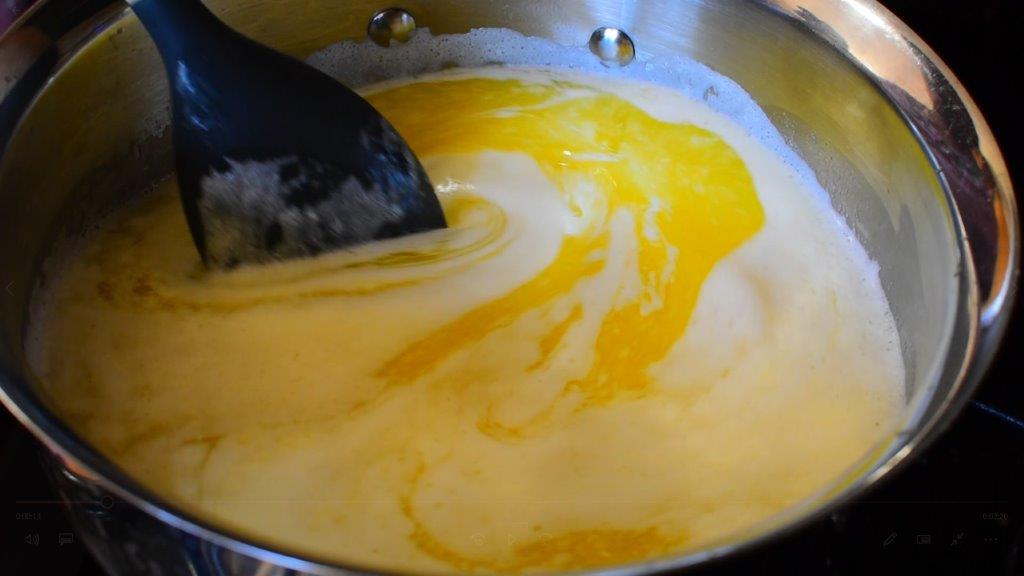
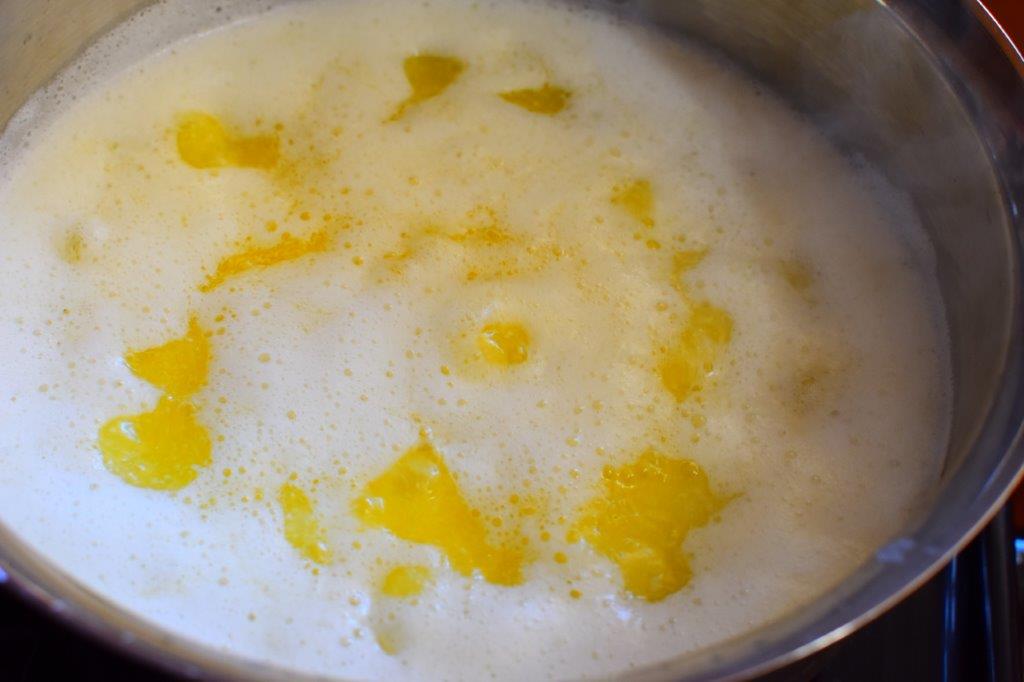
Keep boiling on medium heat till the foam disappears. Keep stirring and keep an eye at this stage.
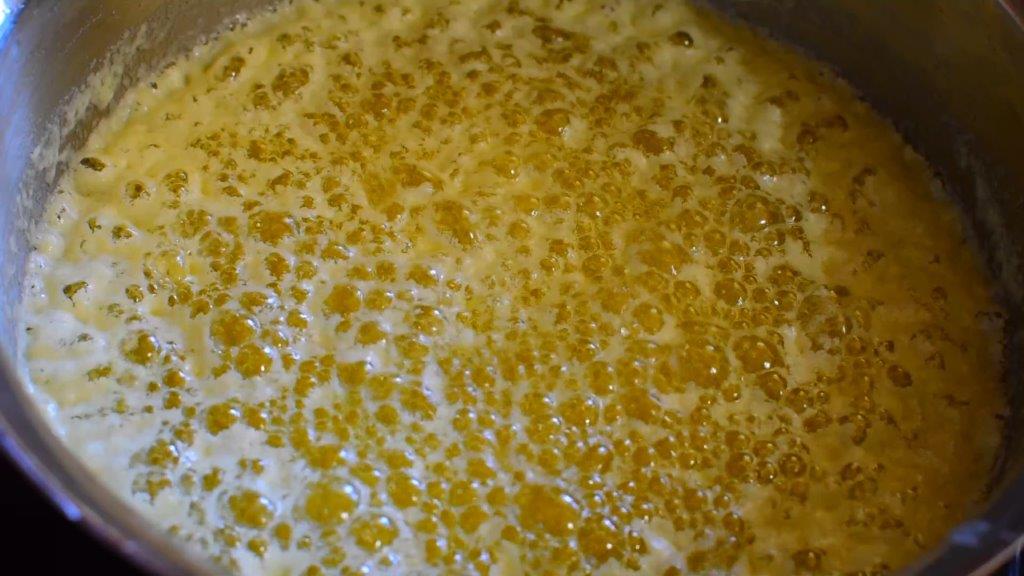
Now the foam turns into solids.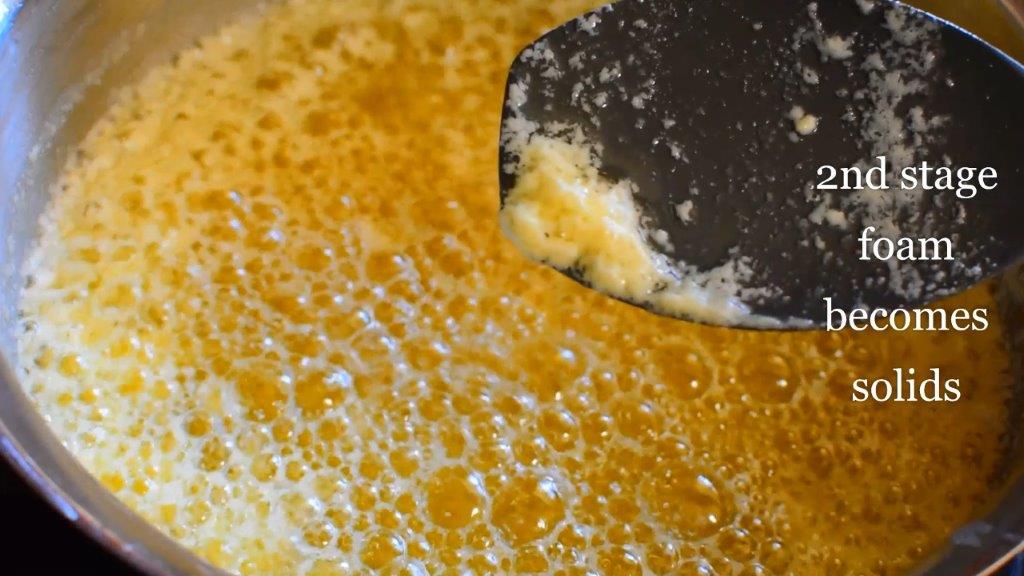
Keep stirring and the foam solids disappear and start forming bubbles. Turn the heat to medium-low at this stage.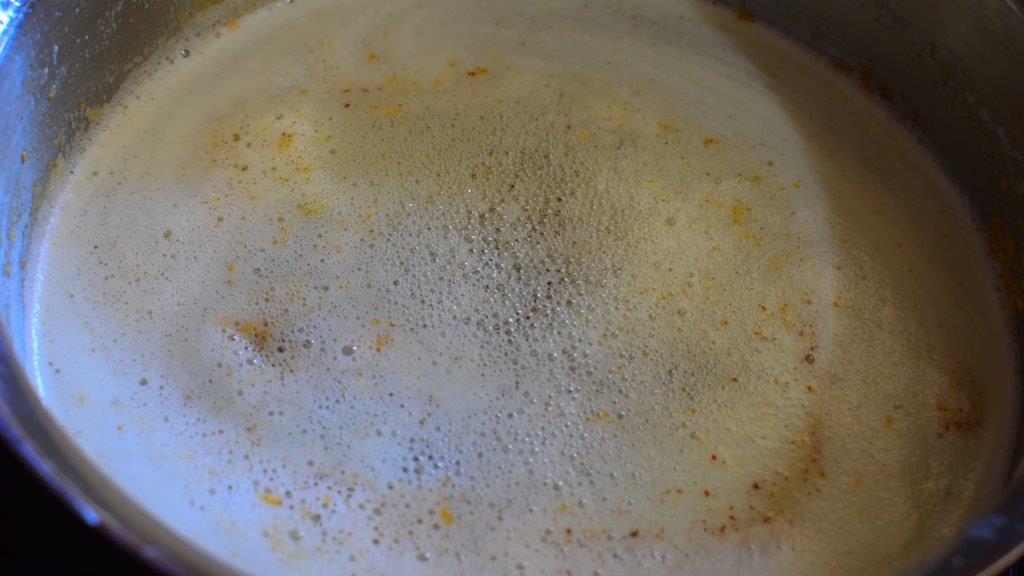
The bubbles get smaller. Switch off the heat at this stage because ghee will keep boiling even after it is switched off. Keep caution not to burn the ghee at this stage.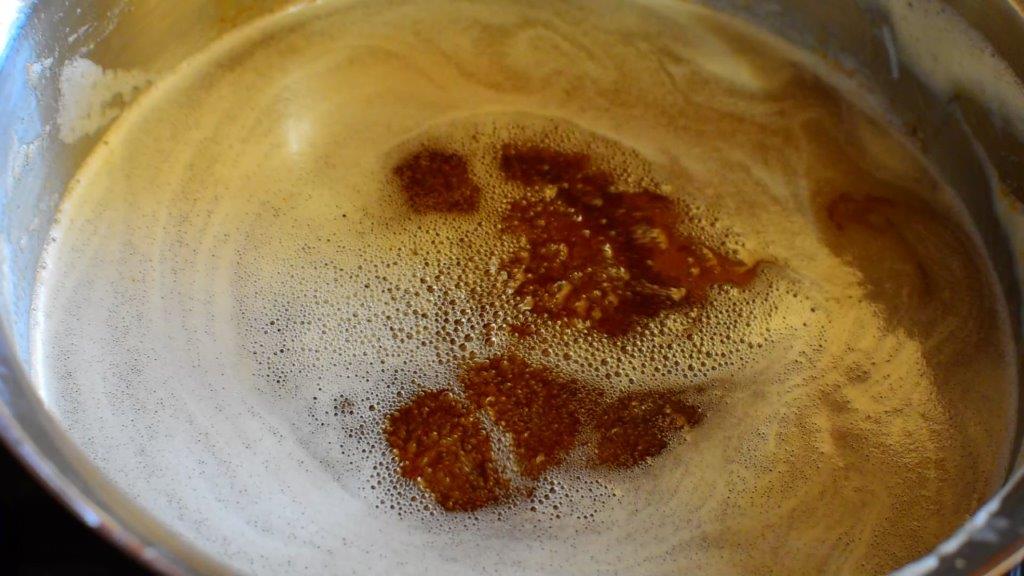
If you like your ghee to be grainy textured, here a tip to make grainy ghee.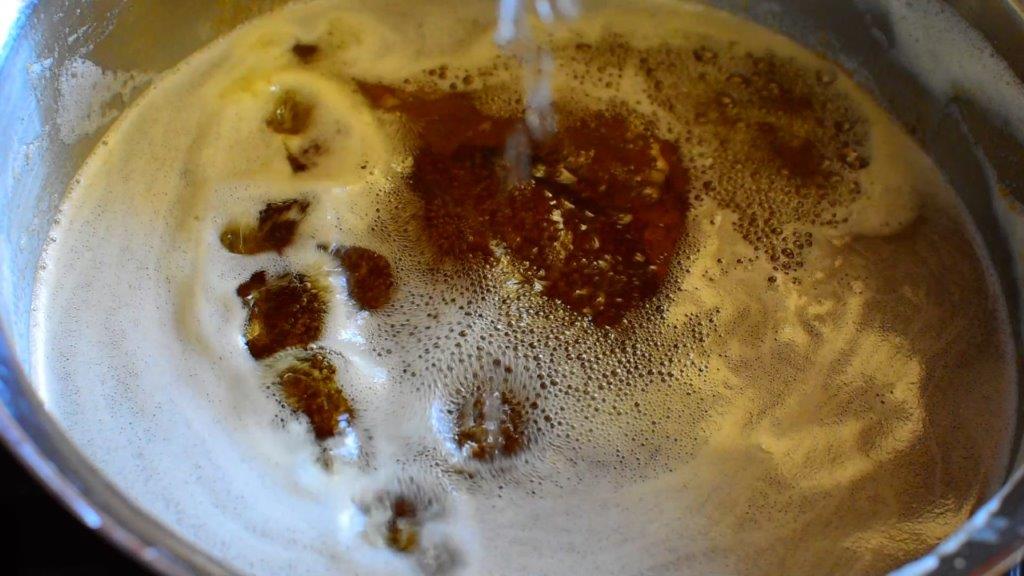
Just before switching off the heat sprinkle some water. Keep the heat on low.
When the bubbles vanish and brown solids settle the ghee is ready to be transferred.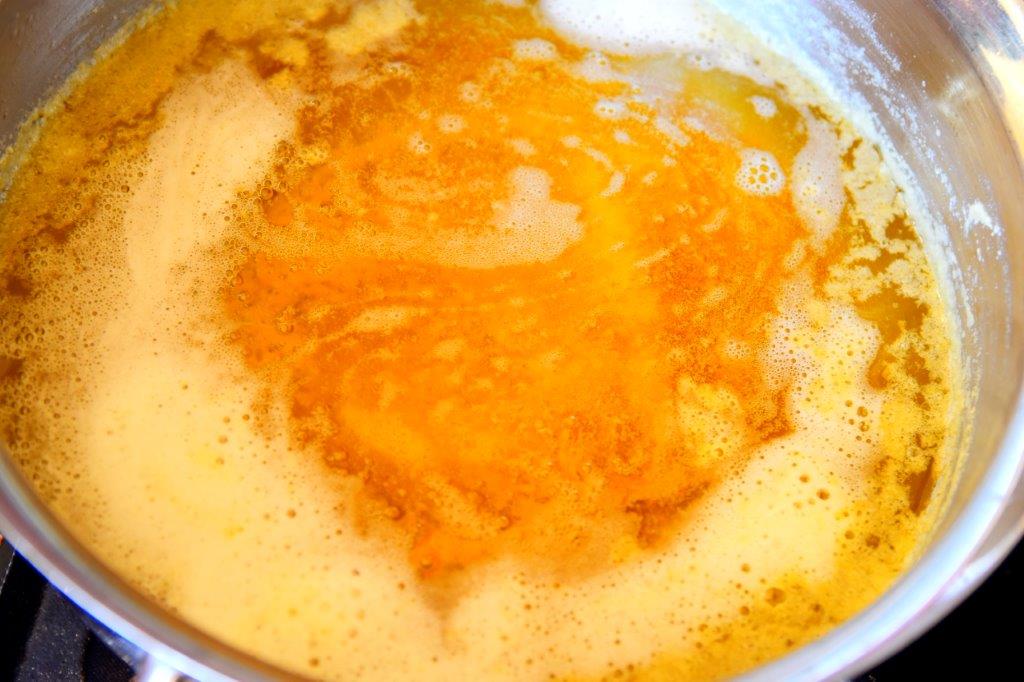
Use Clean moisture-free heat resistant container to transfer the prepared ghee.
Use a cheesecloth/mesh strainer to strain the prepared ghee.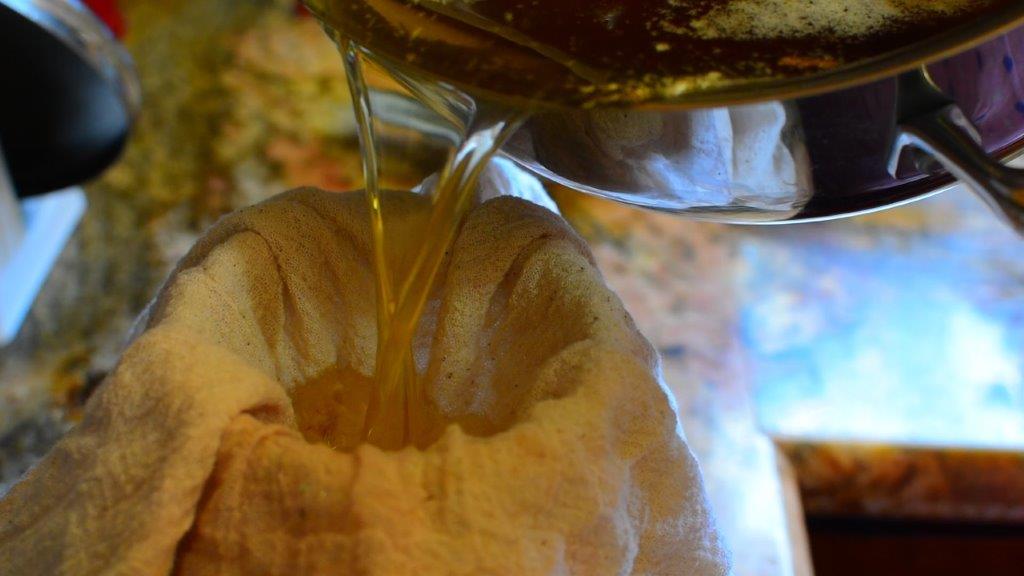
After the ghee is at room temperature close the lid and enjoy the homemade ghee.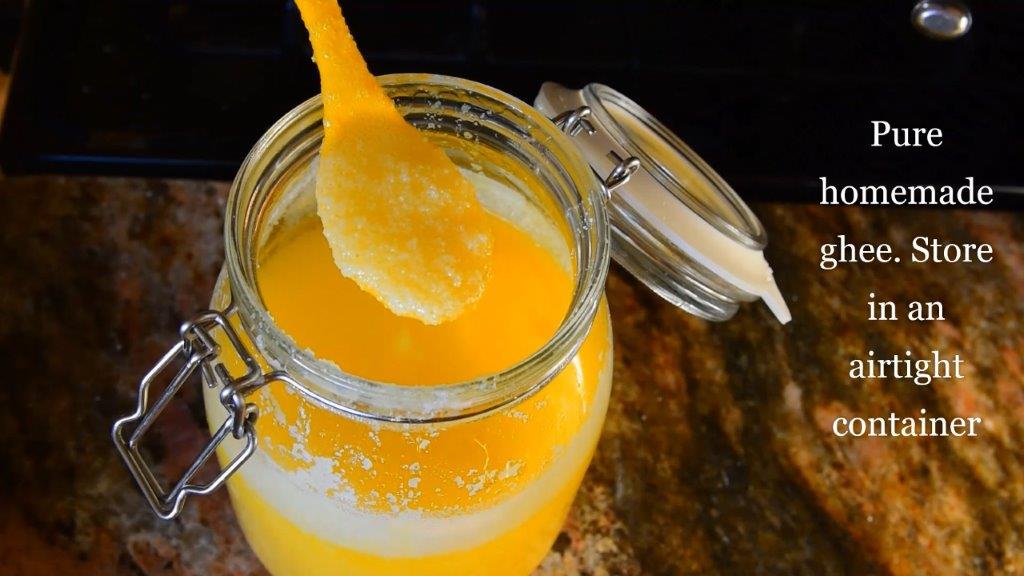
Notes
- There are certainly different methods to make ghee / clarified butter. This is just one method with the store brought milk cream(butter).
- Whenever working with dairy products we must be extra cautious not to burn it. So always be near the gas stove and do not heat on high.
- We can even differentiate the stages from butter to ghee by its smell. It would take some time..but, one can definitely master the skill of smelling the different stages of ghee preparation!
- Do not worry if you think you would end up ruining butter or ghee making would be difficult for you. Just follow these easy steps and you are good to make the perfect ghee every time!
Nutrition Information
Yield
64Serving Size
1Amount Per Serving Calories 112Total Fat 13gSaturated Fat 8gTrans Fat 0gUnsaturated Fat 4gCholesterol 34mgSodium 2mgCarbohydrates 0gFiber 0gSugar 0gProtein 0g
Nutrition Disclaimer: All information and tools presented and written within this site are intended for informational purposes only. I am not a certified nutritionist and any nutritional information on thebayindian.com should only be used as a general guideline. This information is provided as a courtesy and there is no guarantee that the information will be completely accurate. The nutritional labels are a product of online calculators such as Nutritionix. Even though I try to provide accurate nutritional information to the best of my ability, these figures should still be considered estimates. All content within this site is not intended as a medical diagnosis or treatment and should not be considered a substitute for professional medical expertise. If you think you have any type of medical condition, you should seek professional advice. Under no circumstances will thebayindian.com and its owner be responsible for any loss, adverse reactions, effects, consequences, damage, affliction or illness resulting in your reliance on the content here such as the recipes and nutritional information provided. Content should not be considered a substitute for professional medical advise, treatment or diagnosis. Should you need to be sure, please seek advice from a professional nutritionist or your doctor. This website, thebayindian.com, and its owner cannot be held responsible for any errors, omissions or inaccuracies published. This website, thebayindian.com, and its owner disclaim all liability or loss in conjunction with any content provided here. This website, thebayindian.com, and its owner disclaim any liability for products or services recommended on the site. The reader assumes full responsibility for consulting a qualified health professional regarding health conditions or concerns before using the content on this site. To obtain the most accurate representation of the nutritional information in any given recipe, you should calculate the nutritional information with the actual ingredients used in your recipe. You are ultimately responsible for all decisions pertaining to your health. By using thebayindian.com and its content, you agree to these terms.

